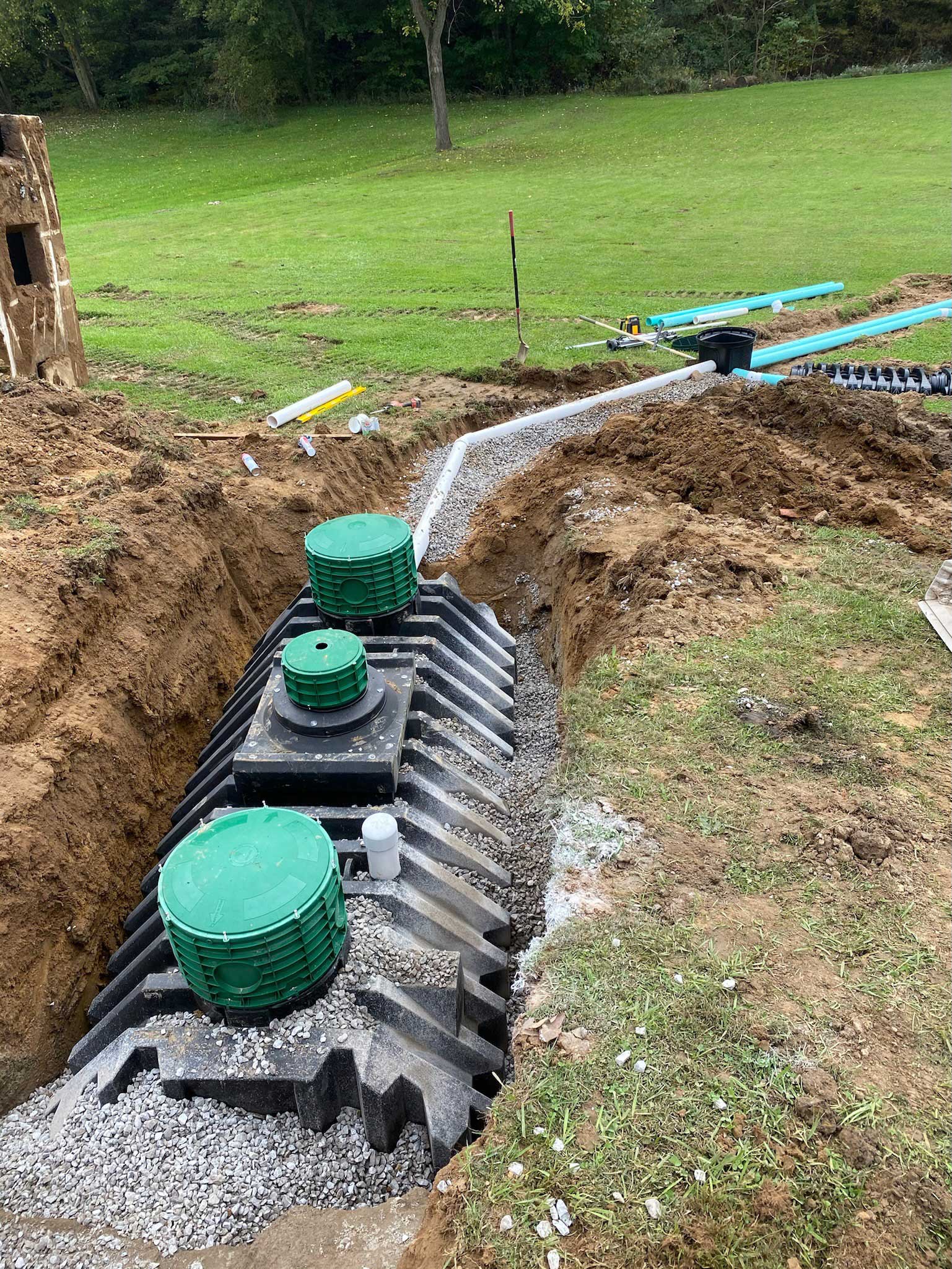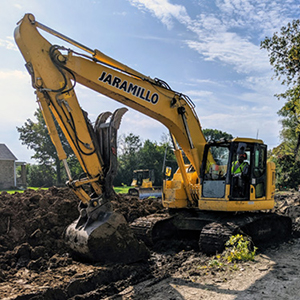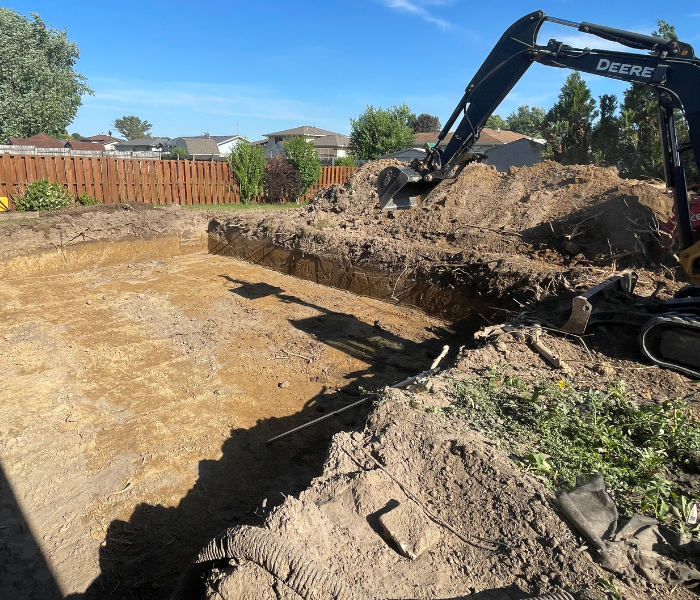Septic Ohio - Comprehensive Septic Tank Solutions in Ohio
Septic Ohio - Comprehensive Septic Tank Solutions in Ohio
Blog Article
In-Depth Expedition: The Science Behind Superior Excavation Practices
The world of excavation methods is a domain where scientific research links with craftsmanship to unearth the enigmas hidden under the planet's surface. From old hand devices to modern hydraulic excavators, the evolution of excavation methods has been a testament to human ingenuity and technical innovations. Nonetheless, what genuinely sets premium excavation practices apart is a deep understanding of geological concepts, combined with the utilization of innovative tools and approaches. By discovering the science behind these methods, we can reveal the secrets that exist underneath our feet and appreciate the precision and expertise that go into every dig.
Advancement of Excavation Methods
Throughout history, the evolution of excavation techniques has actually played an essential duty beforehand construction practices and historical discoveries. From the primary devices used by our forefathers to the advanced machinery used in modern-day times, the development of excavation methods has dramatically changed exactly how we approach different jobs.
In ancient times, manual labor with standard devices such as wheelbarrows, shovels, and pickaxes was the key method of excavation. This labor-intensive process restricted the depth and extent of excavations, often leading to slow-moving progress and limited accessibility to particular websites. As human beings progressed, so did the strategies and devices used for excavation.
The Industrial Change noted a transforming point in excavation techniques with the introduction of steam-powered machinery. This innovation revolutionized the area, allowing for faster and much more comprehensive excavations. In modern times, modern technology plays an essential role in excavation, with developments like general practitioner systems, drones, and 3D scanning enhancing precision and performance in the field. The evolution of excavation techniques remains to shape the way we build, explore, and comprehend the globe around us.
Duty of Modern Technology in Excavation

The assimilation of innovative innovation has essentially transformed the field of excavation, boosting accuracy and effectiveness to extraordinary levels - septic ohio. One of the crucial technical innovations that has actually substantially affected excavation methods is the usage of GPS systems.
In addition, the development of 3D modeling and simulation software has streamlined the planning process for excavation jobs. Designers and drivers can currently picture the entire excavation procedure prior to beginning, recognizing potential challenges and maximizing operations. Along with this, the execution of drones in excavation tasks has facilitated airborne studies, volumetric measurements, and website inspections with unrivaled speed and accuracy.
Geological Principles in Excavation
An understanding of geological principles is crucial for making certain the structural stability and security of excavation sites. Geological aspects play a crucial duty in identifying the expediency and safety of excavation projects (septic ohio). One key geological concept to think about is the type of dirt or rock existing at the site. Different soil types, such as sand, clay, or crushed rock, have varying degrees of security and call for various excavation methods. Cohesive dirts like clay may call for extra assistance to prevent collapses, while sandy soils may be prone to disintegration throughout excavation.
Moreover, the geological structure of the location, including mistakes, fractures, and rock formations, have to be very carefully evaluated to identify possible dangers and difficulties. Excavating near geological fault or unsteady rock developments can bring about instability and prospective dangers. By conducting detailed geological studies and analysis, engineers and excavators can create strategies to reduce dangers and make sure the effective completion of excavation projects. Eventually, incorporating geological principles right into excavation practices is important for attaining safe, effective, and lasting results.

Most Current Tools for Excavation
In the realm of excavation practices, he has a good point contemporary developments in devices have reinvented the effectiveness and precision of excavation procedures. These drones can offer thorough airborne surveys of excavation websites, offering real-time information on topography and potential hazards.
An additional cutting-edge tool obtaining appeal is the execution of 3D printing technology for developing custom excavation equipment. This permits the manufacturing of specialized tools that are tailored to the particular demands of a task, boosting performance and minimizing downtime.
Additionally, developments in materials science have brought about the development of more powerful and much more resilient excavation devices. septic ohio. Tungsten carbide-tipped excavator attachments, for example, deal premium performance in difficult ground problems, enhancing efficiency on-site
Scientific research's Influence on Excavation Practices

In addition, innovations in materials scientific research have led to the production of stronger, more sturdy excavation devices and devices. For instance, the usage of composite materials in shovels and diggers has boosted their performance and longevity, eventually enhancing performance on excavation websites. Furthermore, clinical research study on dirt auto mechanics and geotechnical design has given beneficial understandings right into soil behavior, enabling excavation experts to make enlightened decisions pertaining to excavation methods and dirt stablizing strategies. In general, science continues to drive technology and renovation in excavation techniques, making excavation projects extra reliable, cost-efficient, and sustainable.

Conclusion
Finally, the evolution of excavation techniques has actually been significantly influenced by innovations in modern technology Click Here and a much deeper understanding of geological principles. The most recent devices and tools utilized in excavation have improved performance and precision in the field. The application of clinical understanding has significantly boosted excavation methods, bring about extra efficient and sustainable approaches for digging deep into various kinds of materials.
In the world of excavation practices, contemporary advancements in devices have revolutionized the performance and precision of excavation processes. By leveraging clinical principles, the excavation market has been able to considerably boost effectiveness, precision, and safety and security in excavation procedures. GPR enables excavation teams to non-invasively scan and map subsurface structures, energies, click for info and possible dangers, enabling them to plan excavation tasks with higher precision and reduced threat of mishaps.
Additionally, clinical study on soil mechanics and geotechnical design has actually offered valuable understandings right into dirt behavior, allowing excavation professionals to make informed choices regarding excavation approaches and soil stabilization strategies. Overall, scientific research proceeds to drive innovation and improvement in excavation practices, making excavation projects more effective, cost-efficient, and lasting.
Report this page